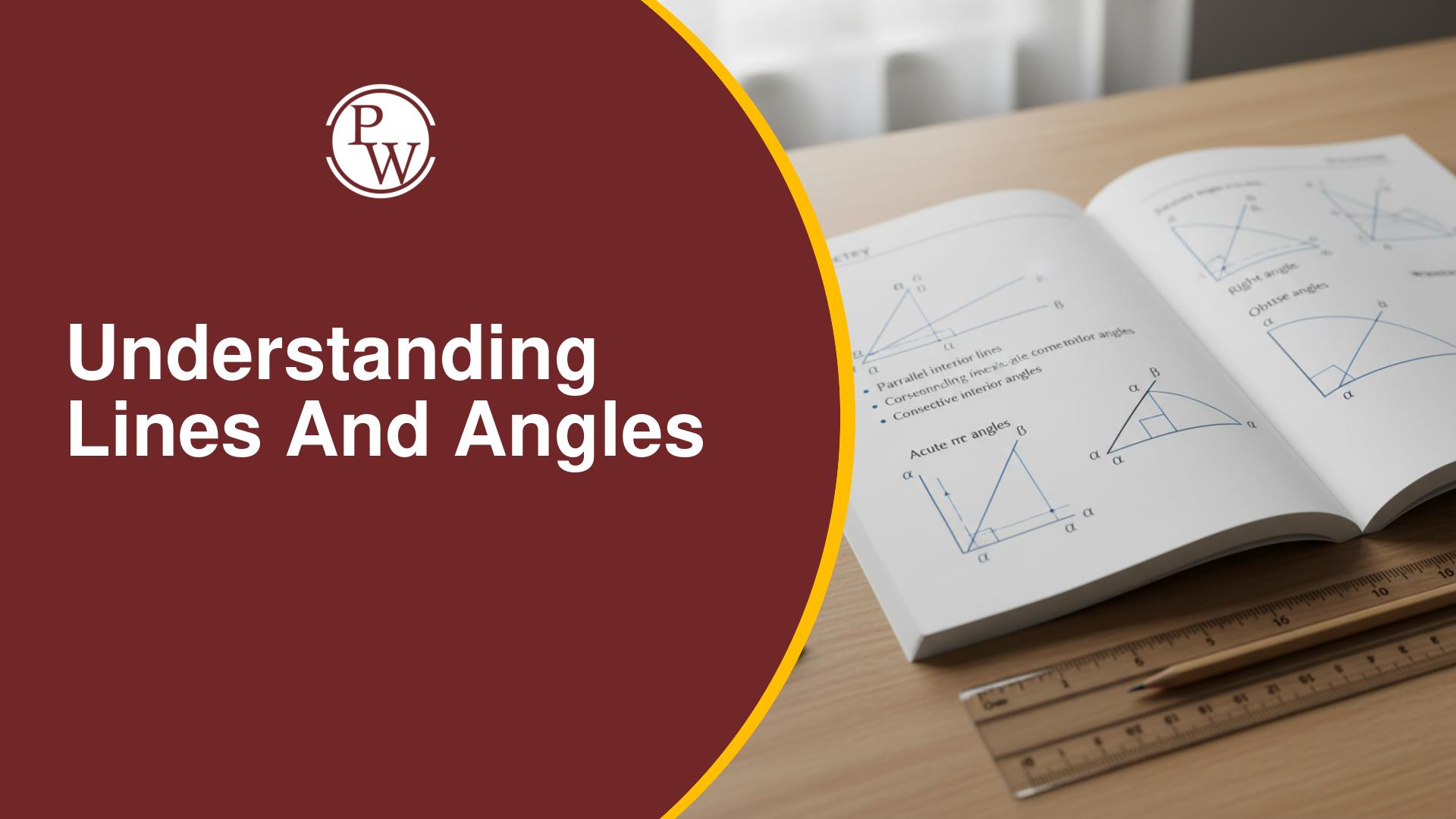
RD Sharma Solutions Class 10 Maths Chapter 4 Exercise 4.3: RD Sharma Solutions for Class 10 Maths Chapter 4 Exercise 4.3 provides detailed explanations and step-by-step solutions to help students understand the concepts in the chapter on Triangles.
Solving these questions helps students strengthen their understanding of triangle properties, such as the basic proportionality theorem, similarity of triangles and more. By practicing with these solutions, students gain confidence in applying theorems and solving problems independently, which is valuable for performing well in exams.RD Sharma Solutions Class 10 Maths Chapter 4 Exercise 4.3 Overview
RD Sharma Solutions for Class 10 Maths Chapter 4 Exercise 4.3 are created by subject experts at Physics Wallah provide a clear and thorough overview of important concepts related to triangles, especially focusing on triangle similarity and related theorems.By working through these expertly designed solutions, students can improve their problem-solving skills, build confidence in tackling geometry questions and prepare effectively for exams. These solutions not only clarify complex concepts but also make learning enjoyable and approachable for students.
RD Sharma Solutions Class 10 Maths Chapter 4 Exercise 4.3 PDF
RD Sharma Solutions for Class 10 Maths Chapter 4 Exercise 4.3 is available in PDF format for easy access and download. With step-by-step explanations students can enhance their comprehension and tackle problems with confidence. By downloading the PDF students can study at their own pace and refer back to the solutions whenever needed. Click the link below to access the PDF and start your preparation for mastering the chapter on triangles.RD Sharma Solutions Class 10 Maths Chapter 4 Exercise 4.3 PDF
RD Sharma Solutions Class 10 Maths Chapter 4 Exercise 4.3 Triangles
Below is the RD Sharma Solutions Class 10 Maths Chapter 4 Exercise 4.3 Triangles-1. In a Δ ABC, AD is the bisector of ∠ A, meeting side BC at D.
(i) if BD = 2.5 cm, AB = 5 cm, and AC = 4.2 cm, find DC.
Solution:
Given: Δ ABC and AD bisects ∠A, meeting side BC at D. And BD = 2.5 cm, AB = 5 cm, and AC = 4.2 cm. Required to find: DC Since AD is the bisector of ∠ A meeting side BC at D in Δ ABC
⇒ AB/ AC = BD/ DC
5/ 4.2 = 2.5/ DC
5DC = 2.5 x 4.2
∴ DC = 2.1 cm
Since AD is the bisector of ∠ A meeting side BC at D in Δ ABC
⇒ AB/ AC = BD/ DC
5/ 4.2 = 2.5/ DC
5DC = 2.5 x 4.2
∴ DC = 2.1 cm
(ii) if BD = 2 cm, AB = 5 cm, and DC = 3 cm, find AC.
Solution:
Given: Δ ABC and AD bisects ∠A, meeting side BC at D. And BD = 2 cm, AB = 5 cm, and DC = 3 cm. Required to find: AC Since AD is the bisector of ∠ A meeting side BC at D in Δ ABC
⇒ AB/ AC = BD/ DC
5/ AC = 2/ 3
2AC = 5 x 3
∴ AC = 7.5 cm
Since AD is the bisector of ∠ A meeting side BC at D in Δ ABC
⇒ AB/ AC = BD/ DC
5/ AC = 2/ 3
2AC = 5 x 3
∴ AC = 7.5 cm
(iii) if AB = 3.5 cm, AC = 4.2 cm, and DC = 2.8 cm, find BD.
Solution:
Given: Δ ABC and AD bisects ∠A, meeting side BC at D. And AB = 3.5 cm, AC = 4.2 cm, and DC = 2.8 cm. Required to find: BD Since AD is the bisector of ∠ A meeting side BC at D in Δ ABC
⇒ AB/ AC = BD/ DC
3.5/ 4.2 = BD/ 2.8
4.2 x BD = 3.5 x 2.8
BD = 7/3
∴ BD = 2.3 cm
Since AD is the bisector of ∠ A meeting side BC at D in Δ ABC
⇒ AB/ AC = BD/ DC
3.5/ 4.2 = BD/ 2.8
4.2 x BD = 3.5 x 2.8
BD = 7/3
∴ BD = 2.3 cm
| CBSE Class 10 English Sample Paper 2024-25 | CBSE Class 10 Maths Sample Paper 2024-25 |
| CBSE Class 10 Social Science Sample Paper 2024-25 | CBSE Class 10 Science Sample Paper 2024-25 |
(iv) if AB = 10 cm, AC = 14 cm, and BC = 6 cm, find BD and DC.
Solution:
Given: In Δ ABC, AD is the bisector of ∠A meeting side BC at D. And, AB = 10 cm, AC = 14 cm, and BC = 6 cm Required to find: BD and DC. Since AD is the bisector of ∠A
We have,
AB/AC = BD/DC (AD is bisector of ∠ A and side BC)
Then, 10/ 14 = x/ (6 – x)
14x = 60 – 6x
20x = 60
x = 60/20
∴ BD = 3 cm and DC = (6 – 3) = 3 cm.
Since AD is the bisector of ∠A
We have,
AB/AC = BD/DC (AD is bisector of ∠ A and side BC)
Then, 10/ 14 = x/ (6 – x)
14x = 60 – 6x
20x = 60
x = 60/20
∴ BD = 3 cm and DC = (6 – 3) = 3 cm.
(v) if AC = 4.2 cm, DC = 6 cm, and BC = 10 cm, find AB.
Solution:
Given: Δ ABC and AD bisects ∠A, meeting side BC at D. And AC = 4.2 cm, DC = 6 cm, and BC = 10 cm. Required to find: AB Since AD is the bisector of ∠ A meeting side BC at D in Δ ABC
⇒ AB/ AC = BD/ DC
AB/ 4.2 = BD/ 6
We know that,
BD = BC – DC = 10 – 6 = 4 cm
⇒ AB/ 4.2 = 4/ 6
AB = (2 x 4.2)/ 3
∴ AB = 2.8 cm
Since AD is the bisector of ∠ A meeting side BC at D in Δ ABC
⇒ AB/ AC = BD/ DC
AB/ 4.2 = BD/ 6
We know that,
BD = BC – DC = 10 – 6 = 4 cm
⇒ AB/ 4.2 = 4/ 6
AB = (2 x 4.2)/ 3
∴ AB = 2.8 cm
(vi) if AB = 5.6 cm, AC = 6 cm, and DC = 3 cm, find BC.
Solution:
Given: Δ ABC and AD bisects ∠A, meeting side BC at D. And AB = 5.6 cm, AC = 6 cm, and DC = 3 cm. Required to find: BC Since AD is the bisector of ∠ A meeting side BC at D in Δ ABC
⇒ AB/ AC = BD/ DC
5.6/ 6 = BD/ 3
BD = 5.6/ 2 = 2.8cm
And we know that,
BD = BC – DC
2.8 = BC – 3
∴ BC = 5.8 cm
Since AD is the bisector of ∠ A meeting side BC at D in Δ ABC
⇒ AB/ AC = BD/ DC
5.6/ 6 = BD/ 3
BD = 5.6/ 2 = 2.8cm
And we know that,
BD = BC – DC
2.8 = BC – 3
∴ BC = 5.8 cm
(vii) if AB = 5.6 cm, BC = 6 cm, and BD = 3.2 cm, find AC.
Solution:
Given: Δ ABC and AD bisects ∠A, meeting side BC at D. And AB = 5.6 cm, BC = 6 cm, and BD = 3.2 cm. Required to find: AC Since AD is the bisector of ∠ A meeting side BC at D in Δ ABC
⇒ AB/ AC = BD/ DC
5.6/ AC = 3.2/ DC
And we know that
BD = BC – DC
3.2 = 6 – DC
∴ DC = 2.8 cm
⇒ 5.6/ AC = 3.2/ 2.8
AC = (5.6 x 2.8)/ 3.2
∴ AC = 4.9 cm
Since AD is the bisector of ∠ A meeting side BC at D in Δ ABC
⇒ AB/ AC = BD/ DC
5.6/ AC = 3.2/ DC
And we know that
BD = BC – DC
3.2 = 6 – DC
∴ DC = 2.8 cm
⇒ 5.6/ AC = 3.2/ 2.8
AC = (5.6 x 2.8)/ 3.2
∴ AC = 4.9 cm
(viii) if AB = 10 cm, AC = 6 cm, and BC = 12 cm, find BD and DC.
Solution:
Given: Δ ABC and AD bisects ∠A, meeting side BC at D. AB = 10 cm, AC = 6 cm, and BC = 12 cm. Required to find: DC Since AD is the bisector of ∠ A meeting side BC at D in Δ ABC
⇒ AB/ AC = BD/ DC
10/ 6 = BD/ DC …….. (i)
And we know that
BD = BC – DC = 12 – DC
Let BD = x,
⇒ DC = 12 – x
Thus (i) becomes,
10/ 6 = x/ (12 – x)
5(12 – x) = 3x
60 -5x = 3x
∴ x = 60/8 = 7.5
Hence, DC = 12 – 7.5 = 4.5cm and BD = 7.5 cm
Since AD is the bisector of ∠ A meeting side BC at D in Δ ABC
⇒ AB/ AC = BD/ DC
10/ 6 = BD/ DC …….. (i)
And we know that
BD = BC – DC = 12 – DC
Let BD = x,
⇒ DC = 12 – x
Thus (i) becomes,
10/ 6 = x/ (12 – x)
5(12 – x) = 3x
60 -5x = 3x
∴ x = 60/8 = 7.5
Hence, DC = 12 – 7.5 = 4.5cm and BD = 7.5 cm
2. In figure 4.57, AE is the bisector of the exterior ∠CAD meeting BC produced in E. If AB = 10 cm, AC = 6 cm, and BC = 12 cm, find CE.
Solution:
Given: AE is the bisector of the exterior ∠ CAD and AB = 10 cm, AC = 6 cm, and BC = 12 cm. Required to find: CE Since AE is the bisector of the exterior
∠
CAD.
BE / CE = AB / AC
Let’s take CE as x.
So, we have
BE/ CE = AB/ AC
(12+x)/ x = 10/ 6
6x + 72 = 10x
10x – 6x = 72
4x = 72
∴ x = 18
Therefore, CE = 18 cm.
Since AE is the bisector of the exterior
∠
CAD.
BE / CE = AB / AC
Let’s take CE as x.
So, we have
BE/ CE = AB/ AC
(12+x)/ x = 10/ 6
6x + 72 = 10x
10x – 6x = 72
4x = 72
∴ x = 18
Therefore, CE = 18 cm.
3. In fig. 4.58, Δ ABC is a triangle such that AB/AC = BD/DC, ∠B=70 o , ∠C = 50 o , find ∠BAD.
Solution:
Given: Δ ABC such that AB/AC = BD/DC, ∠B = 70 o and ∠C = 50 o Required to find: ∠BAD We know that,
In ΔABC,
∠A = 180 – (70 + 50) [Angle sum property of a triangle]
= 180 – 120
= 60
o
Since,
AB/AC = BD/DC,
AD is the angle bisector of angle ∠A.
Thus,
∠BAD = ∠A/2 = 60/2 = 30
o
We know that,
In ΔABC,
∠A = 180 – (70 + 50) [Angle sum property of a triangle]
= 180 – 120
= 60
o
Since,
AB/AC = BD/DC,
AD is the angle bisector of angle ∠A.
Thus,
∠BAD = ∠A/2 = 60/2 = 30
o
Benefits of Solving RD Sharma Solutions Class 10 Maths Chapter 4 Exercise 4.3
Solving RD Sharma Solutions for Class 10 Maths Chapter 4, Exercise 4.3 provide several benefits that can significantly enhance a student's learning experience: Clear Understanding of Concepts : The solutions provide step-by-step explanations that help clarify complex concepts related to triangles, such as similarity and congruence. This foundational understanding is crucial for tackling advanced topics. Effective Problem-Solving Skills : By working through the exercise students can develop strong problem-solving skills. The varied types of questions encourage them to apply different methods and strategies, enhancing their analytical thinking. Confidence Building : Regular practice with these solutions boosts students confidence in their mathematical abilities. As they become familiar with solving problems they are more likely to approach exams with a positive mindset. Preparation for Exams : These solutions align with the curriculum and exam pattern, making them a valuable resource for exam preparation. Students can practice the types of questions they may encounter in their actual exams. Self-Paced Learning : The availability of solutions allows students to learn at their own pace. They can revisit challenging problems and reinforce their understanding without the pressure of a classroom setting. Error Analysis : By reviewing the solutions students can identify and understand their mistakes. This process of error analysis is essential for improvement and helps them avoid similar errors in the future.RD Sharma Solutions Class 10 Maths Chapter 4 Exercise 4.3 FAQs
Are the solutions helpful for exam preparation?
What is the benefit of solving Exercise 4.3?
Are these solutions aligned with the CBSE syllabus?
Is it important to practice all the exercises in the chapter?










